Google made a significant announcement during its latest event – Google Marketing Next conference, in San Francisco a few weeks ago. But what’s in for you? Check out this article to know how this new tool can redefine your marketing strategies.
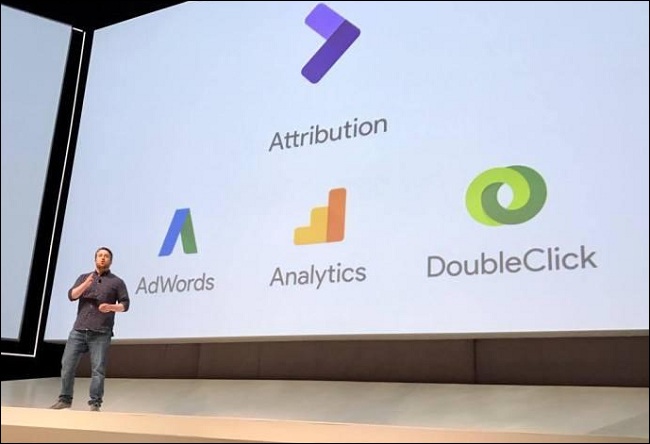
Before everything, let’s have a quick overview of what attribution is and what is Google Attribution.
Attribution in marketing is used as a process of identifying the causes of certain user actions and assigning these actions some credit. It is basically related to determining what media are bringing purchases from users.
There are various types of attribution models used by marketers according to their needs. Attribution works as the powerhouse of marketing as these models help marketers keep a track of their advertising campaigns and know what works and what not.
There were many issues in the earlier attribution models, calling for a better and feature-rich solution. Google plans to solve the problems faced by previous tools with Google Attribution.
Google Attribution is the latest marketing tool that aims at making it easy for marketers to derive bidding decisions using attribution data that is calculated on the basis of role they play in the complete buyer’s journey.
Let’s know what problems does Google Attribution Solves
After going through the link, now you know the three main attribution models used by marketers in their ad campaigns:
- First Click
- Linear
- Last Click
The issue with all three models is that they do not assign appropriate credit to user actions and touch points as they should. First Click and Linear models assign complete credit to only one or equal credits to all, whereas in Last Click model the entire credit is given only to the last click.
This does not let marketers get a complete idea of how and what actions by users are affecting their channel and ad campaigns.
That’s one of the main reasons behind less popularity of Last Click model.
There are other points where the existing models lack. For instance, the existing attribution models do not give information about offline to online effects. As a result, marketers cannot estimate marketing impacts precisely for different marketing channels that happen later in the user’s’ journey.
So How’s The New Attribution Model Better?
Google hopes to kick out the issues faced by the existing models with the new attribution. It is advanced, makes better use of data, and give more precise insights into the media channels and their performance.
Google Attribution additionally offers one more benefits. It lets you get a complete idea about users. Here’s how.
Chasing the User
- The new model lets you understand the entire conversion journey of a user across all channels.
- It then lets you track the total number of touchpoints (clicks) a user connects with a brand through. This includes every insight from the first engagement with the brand to the conversion.
- This makes it possible for you to find the ways digital channels can work together.
- It additionally lets you explore and come with a more holistic view of overarching digital strategy, promotion of integration between different channels, devices, and mediums.
As quoted by Matt Haig, Author of “Mobile Marketing – The Message Revolution”,
“End users not technologies shape the market. Consequently, marketers need to stay abreast not only of technological developments but also of the way people respond to them.”
IDEALLY, the new model should make sure that every channel gets due credit for each sale, on the basis of the unique habits and nuances of consumer behavior that affects a brand. This is again something that has been missing in the existing models.
Bye Bye Last-Click
Over the past few years, the search engine giant has been working on ways to get rid of the ‘last-click’ attribution from its platforms, especially AdWords. It is due to the fact that the company wants its platforms to show modern search habits in a better way and eliminate the not-so-productive approach of Last-Click model that lays emphasis only on the last click.
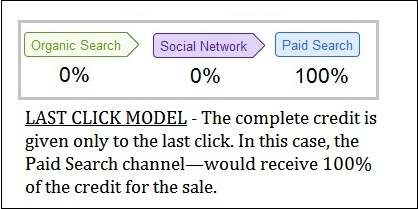
In short, Google Attribution takes the data and functionalities of AdWords, Analytics, and DoubleClick Search and integrates all of them into one platform. This lets marketers link their reports without having to do further sale tagging. They can also manage performance under a single platform.
Due to native integrations, marketers can feed back the modeled conversion data into the Google AdWords or DoubleClick Search to make bidding decisions. One thing to note here is that Google Attribution’s aspect of working does not apply only to paid marketing channels like PPC and display.
Rather it applies to all channels such as:
- Affiliate Marketing
- Direct Traffic
- Organic Search
- Social Media
What will be the impact?
To get a better overview of how and what difference Google Attribution may bring to the existing marketing strategies of the marketers, let’s have an imaginary comparison between the ad campaign of the same company when it follows –
- Last-Click Attribution
- Google Attribution
Here is an example:
Let’s assume a company X with $10 million marketing budget and they decide their marketing budget according to the attribution data of the previous year.
To keep it simple, we assumed that company’s decision is only based on the last-click model’s attribution data.
Say, the previous year attribution data shows:
Paid Ads: 80%
SEO: 10%
Social Media: 10%
Using the Last Click attribution, the company will take an informed decision to allocate $8mn in Paid ads, 1mn in Social Media, and $1mn in SEO.
Let’s assume according to Google attribution, here is the attribution that it gives:
Paid Ads: 50%
SEO: 30%
Social Media: 20%
With this data, company will decide to allocate $5mn to Paid Ads, $3mn to SEO, and $2mn to Social Media.
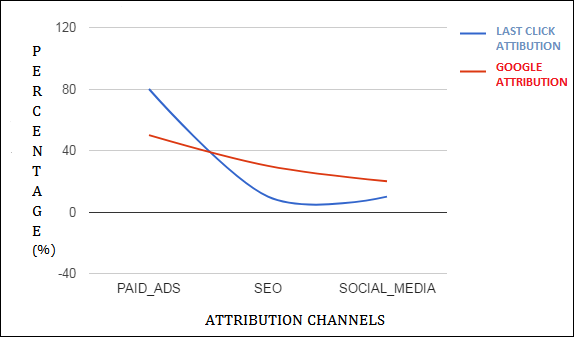
Did you see it is very different from what the company did with the previous attribution model!
With more accurate attribution models, companies would not only be able to decide their budgets better for each marketing model but can also come up with better performing strategies.
Chief Marketing Officer at Visual IQ, Bill Muller also has something to say on marketing attribution solutions.
“Whatever your industry, determining the right metrics ultimately comes down to identifying the connective tissue that ties marketing activities to business results.”
Here’s What Google Attribution is Based on:
Machine-Driven Regression Attribution
Google has introduced versions of attribution to its other tools like Analytics’ Multi-channel Future reports. But these rely upon defined attribution models like
- first click
- Linear
- and last click
Here Google Attribution serves with “Data Driven” attribution which according to Google, will use advanced machine learning compare purchase paths. It will also help you analyze what’s working and what’s not on the basis of a site’s own data!
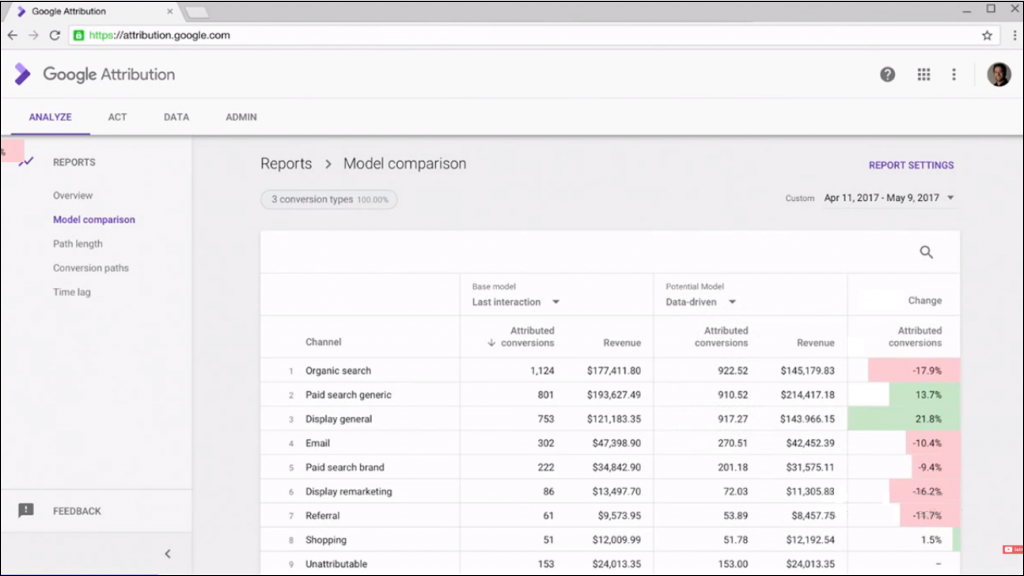
What if it works? If so, then this would be no less than a variation on a ‘regression’ attribution model that uses historical data to express the weighting of credit applied to every touchpoint and give a better and precise attribution model. This is obviously something that current attribution models do not offer.
Don’t Miss the Data-Driven Factor
Even though the basic concept behind ‘Data-Driven’ attribution is not new, but what makes it seem better in Google Attribution is that it addresses the main issue in the regression model – TIME! So far, the time has been the main turn off behind why regression model does not find application widely.
Being a marketer, you should know it takes time to
- collect data
- calculate the model
- and derive the suitable insight out of it.
Google Attribution fixes the issue and offers a dedicated attribution model customized to a business’ marketing activity and customers.
All this without needing manual labor, just data!
Content Optimization Made Easy
When it becomes easy to know how users interact with your brand throughout different devices, marketers can without much effort optimize their brand’s UI across all of them.
Now what does it mean?
Well, here’s the kicker. It means your brand will be able to rethink and optimize its content for each particular device. This way, brands can make sure that they do not miss out the engagement and dialogue factor towards audiences while they change their devices.
Useful for Call-to-Action or Gateway Terms
If you think from a paid search perspective, the new Google Attribution tool will give brands much-needed visibility across the call-to-action or gateway terms.
But wait! What are these terms?
Such terms are known as keywords that help businesses in driving sales. However, these terms aren’t generally credited under a last-click attribution model.
Unlike existing attribution models, Google Attribution lets you overview the complete picture and derive smarter decisions on how these terms work with your overall keyword strategy and the benefit they bring.
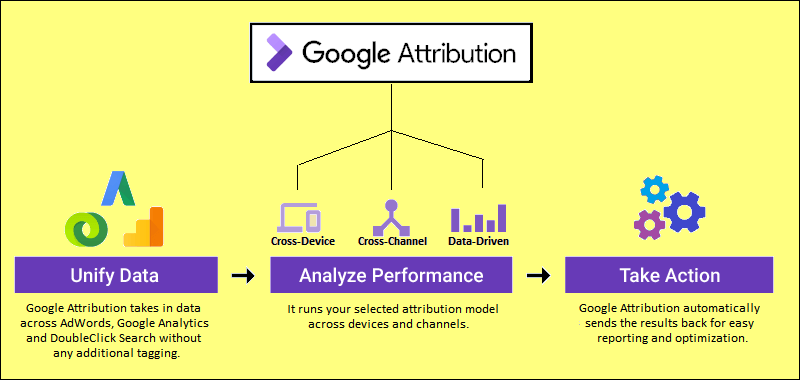
Google Attribution works with less effort and more results:
- It does not demand additional setup as it makes use of data that is already available via other Google products.
- It then offers actionable insights into the complete purchase journey of users on a site.
- As already mentioned above, marketers can then pass back the data to AdWords or DoubleClick Search to help with the bidding decisions.
Also, Google Attribution does not need further sale tagging.
To use the new model, all you need to do is just:
- Link a Google Analytics view that is associated with a registered AdWords or DoubleClick Search account.
- After you have set up your account, Attribution imports data related to performance from the respective Analytics view (the account you linked).
- This may also include offline conversion event data that has been earlier uploaded to Google Analytics.
- Afterward, marketers can separately assign an attribution model to specific conversion events.
Alike Analytics, they can compare models side-by-side.
Nothing Comes Perfect: Flaws in Google’s New Attribution Model
Although the new product seems to have several advantages over the existing models, it does have its own set of flaws that being a marketer you should consider first.
- A few of the attribution models in the tool do not offer complete picture. This means some of the models focuses only on certain activities, skipping the total number of times a user has viewed content from channels.
- Some models do not comprise of ‘post view’, which means your reports could have ignored the fold impressions (the ones that users never viewed). This may end up giving you false idea of a channel’s working post view.
There’s struggle between some attribution models and cross device attribution. Attribution would not show cross-device activity that took place between a desktop user on Google and a mobile user on Facebook, unless and until the email ID used to sign in both the Android and Facebook account matches.
Cost
As for now, Google Attribution will be free to use. The company plans to make the service accessible for all marketers to bring about improvements in their current marketing and advertising practices.
Finals Words – Anything Else To Know
At present, the new model is still in its beta phase. Google will roll out the tool in the upcoming months, giving answers to the expectations, rumors, and assumptions about it, including:
- The difference between the enterprise and the free version
- The extent up to which the offline conversions and store visits are included
- TV attribution included

All these queries can be answered only in the coming months when Google will finally roll out Google Attribution. Apart from it, the other notable announcement during the event includes launch of promoted places and local inventory ads for retailers, which will let them market special offers and display whether or not the products are available at a local store. It will also offer an option to link customer loyalty cards to Google Adwords to offer a better insight on the way digital is bringing in-store sales.
All this is yet to hit worldwide, so the best option is to stay tuned with us for latest updates on Google’s latest attribution model. Till then, enjoy the beta version.
